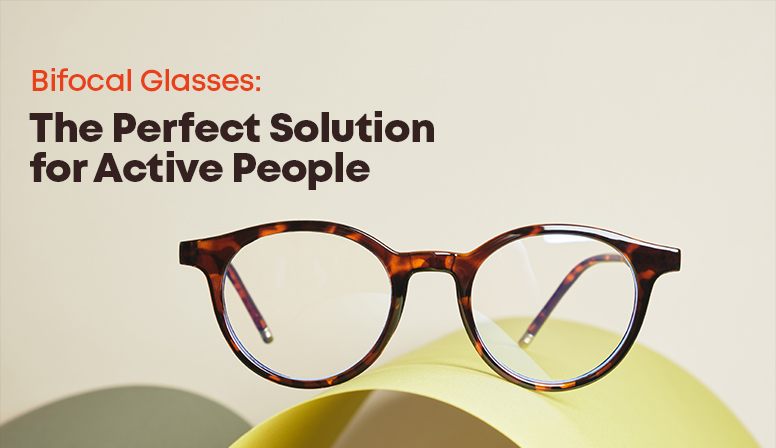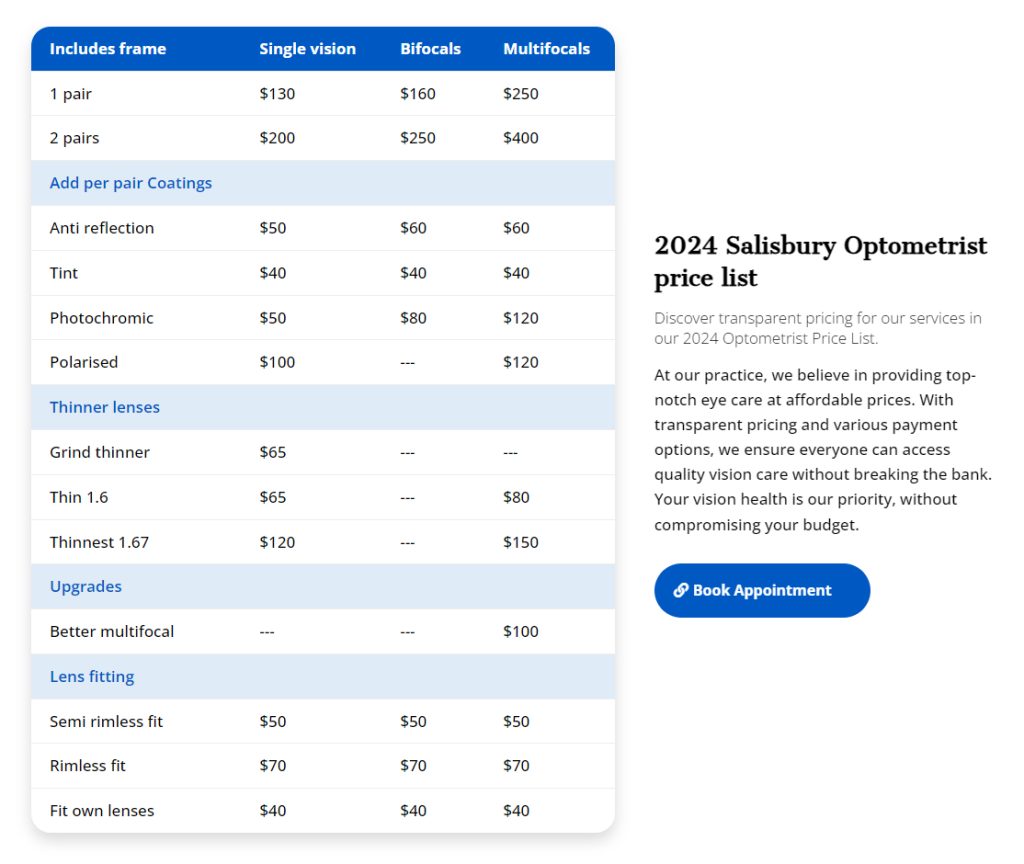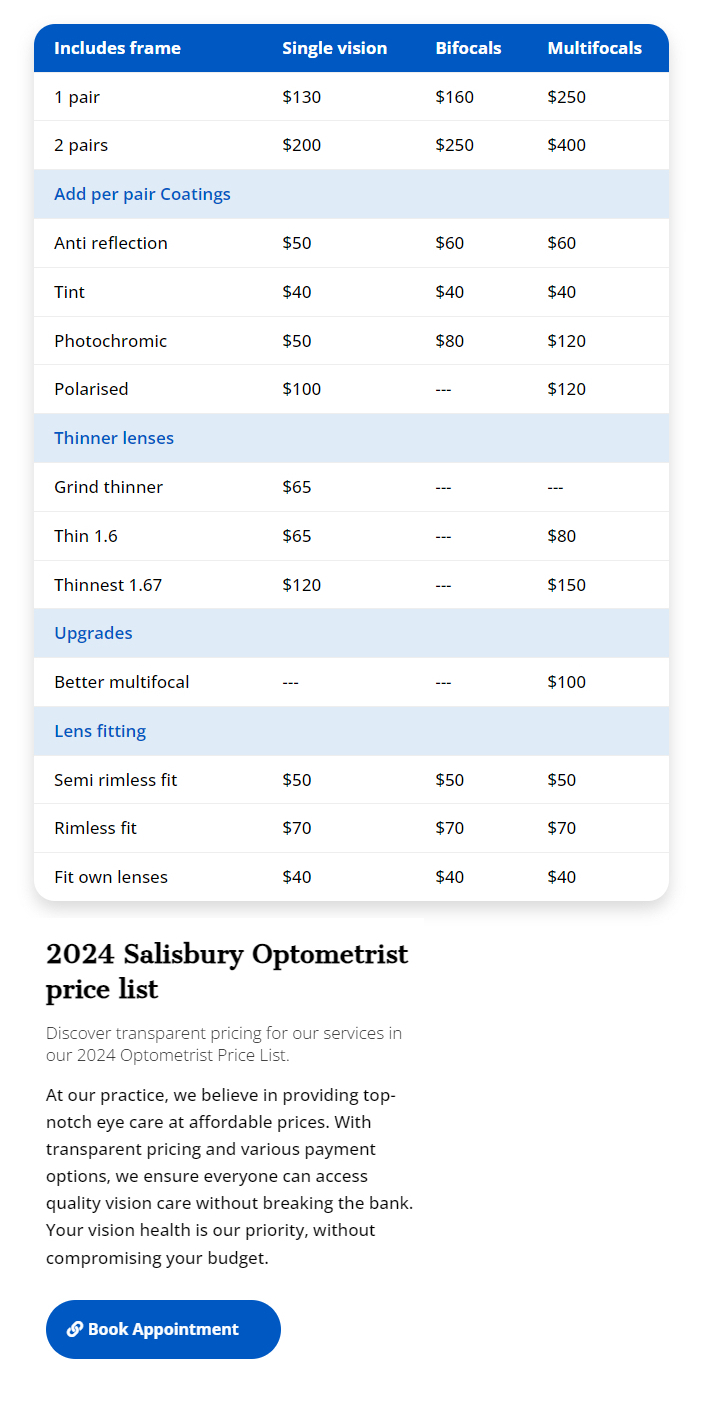Bifocal Glasses are types of multifocal glasses. These lenses have two composites yet distinctive visionary phases. The makers make the lenses with two different characterized portions. The larger portion helps the user in long-distance visions. The wearer will use the bigger part while traveling on the road, seeing the advertisements, watching vehicles while crossing the streets, watching television from across the room corner, etc.
On the other hand, the minor part in the Bifocal Glasses helps in the user’s near-sightedness. These lenses clear the hindrances you face from myopic elements in your eyes. You can comfortably read books, surf the internet on your mobile phone, and do various other activities.
Manufacturers fix thin lines between these multifocal glasses’ larger and smaller portions. Each of the parts stays integrated while keeping up its distinctive features. Other people can hardly recognize those lines.
Ophthalmologists prescribe dual-prescription lenses to patients who may be at risk of presbyopia. The disease is often a near-sightedness issue. It happens due to mature ages. People with a preference for contact lenses can also use these glasses.
Use of Bifocal Glasses by active people
With aging, you may need to use a reading glass while doing close studies. There are also instances when you take support of prescription glasses to support near-sightedness. Therefore, you are carrying a dual prescription while counteracting diseases like presbyopia. With Bifocal Glasses, people have found unique solutions for their contrasting conditions.
In the following lines, we have narrated a few utilities the dual focal lenses come up with:
Multiple functionalities
Bifocal Glasses offer multi-directional functionalities. The manufacturer integrates two entirely different properties into a single lens. These lenses separate focuses at other parts of the lens. While the more significant part of the lens helps the user with the normal vision correction, the smaller part helps correct the near-sightedness.
Different Types
Discussing the various types of bifocal lenses will make us know how these glasses help people.
These glasses have four different formations. Each of these can serve dual visionary purposes.
- The first variety has a half-moon configuration. The lower part of these glasses has an inverted D formation. Users need to utilize this portion to better their study purpose. This formation helps those who do not want to shift their bifocals while changing from watching to studying.
- The second variety uses a round-shaped lower section in bifocals. People use this portion to correct their near-sightedness. It would help if you moved your head around to have a better closer study than your peers.
- The third type involves the use of a ribbon segment. The lower third of the quarter gets the shape of a ribbon. The designers have meant its benefits for reading purposes.
- In the fourth part, the manufacturer has divided the entire lens into two halves. The upper part helps in correcting the myopic correction. The lower part offers near-vision correction.
Bifocal Glasses for cure
Double-lens glasses help cure three types of eye diseases. These are Presbyopia, The Accommodative Dysfunction, and The Accommodative Esotropia.
Presbyopia
The disease usually comes at a later age. The victim loses the capacity to see objects at a closer distance. The disease symptoms also include the inability to adjust focus on essential things.
Ophthalmologic experts usually refer to using a duo-focused lens in this disease. The lens increases your reading ability, thereby optimizing your focusing ability.
Accommodative Dysfunction
Does your child suffer from weaker vision? Or do you understand that he suffers from frequent headaches? Please do not wait to bring them to a pediatric doctor in both cases. The doctor will refer your child to a specialist doctor.
The kid is suffering from a sensitive visionary issue. They call it the Accommodative Dysfunction. Bifocal Glasses are the solution to the disease. The child regains the power to concentrate on things and can see far and near objects. The disease affects the tissues in the eye that helps one to focus.
Accommodative Esotropia
The disease also offers accountability on the focus tissues in the eyes. The clinical investigation may reveal that the victim’s accommodative system is underdeveloped. Children are the worst victims of the disease.
Instead of reducing, the focusing power in these kids increases multiple times. Their eyes turn when they focus on the nearby objects and become straight again when they focus on distant objects. Doctors recommend Bifocal Glasses to correct the deficiency.
Conclusion
From the above discussion, we have seen that bifocal glasses help address several diseases. The user need not purchase two separate glasses; therefore, the glasses serve economic purposes too.




0 Comments